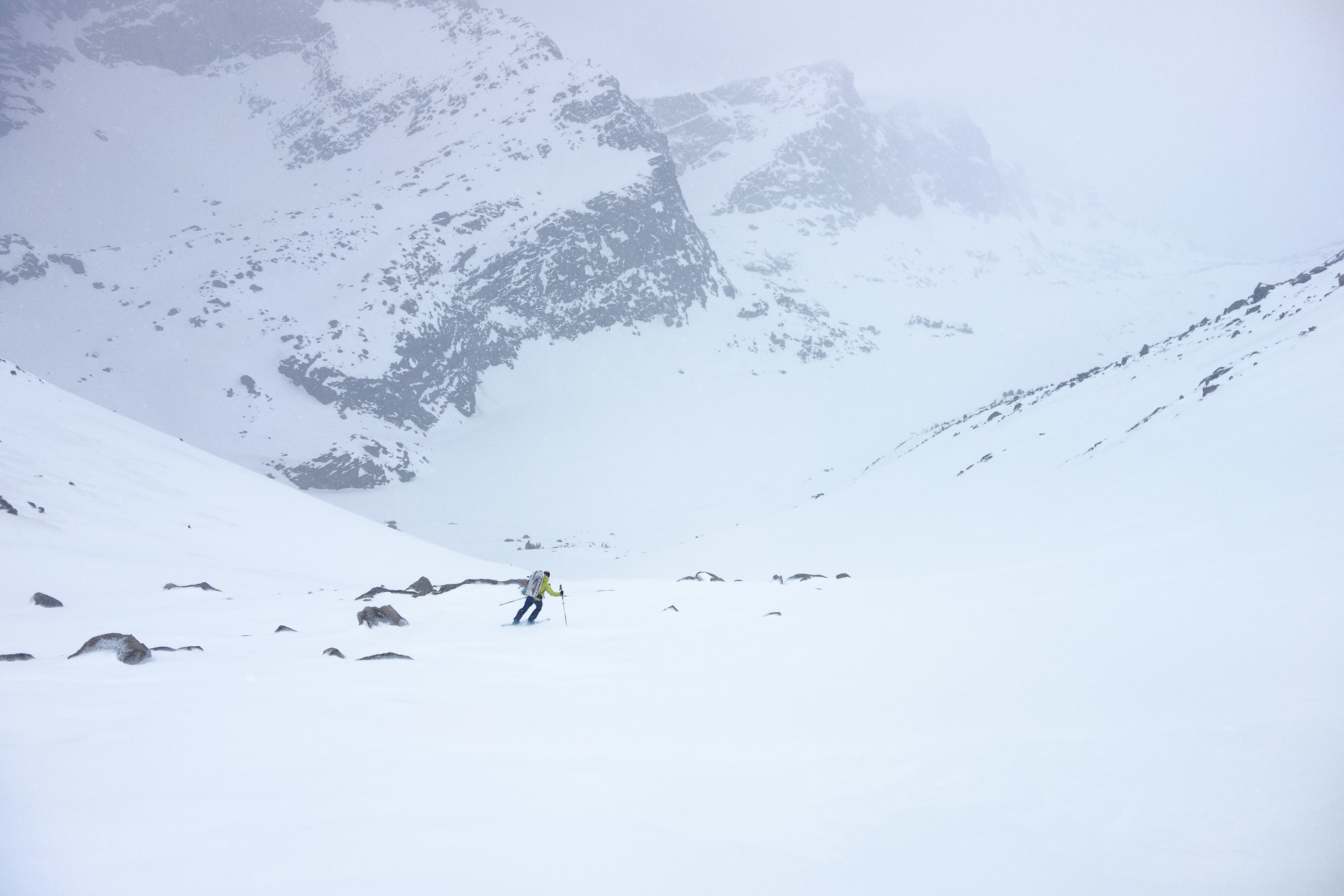Packing for my last multiday traverse, pre-ACL surgery, and post-ACL blowout, I sought every advantage to reduce pack weight. One partner, Kelly, a seasoned alpinist and by default sufferer, came to play with a very light pack for six days: ~35 pounds. Initially, my pack weighed 45 pounds, which I cut to 39 pounds. For comparison, Kelly had a 30-degree bag; mine was zero-degree (there are two pounds). He’s also about four inches smaller than me, so for sure, with my larger clothing size, I carry more overall fabric and insulation. Digressions matter when being weighed down.
For organization purposes and proper lightest-pack bragging rights, we each carried our personal items, including food. We divided the tent in three (fly, poles, and main tent) and split the fuel and stove between us.
The Fuel: How Much?
We used a MSR Windburner stove and a 1.8L pot. It was an excellent choice for us. Kelly, having the most experience with a true go-light (maybe some disaster style mixed in) ethos, advised a single eight oz. fuel canister for three people/day. We had some cold and warm days with a mix of cloud cover and one major dump over six days. Although we packed seven days of fuel, providing a one-day margin, we came home with spare fuel.
As a rule, we heated water in the evenings for tea and rehydrating freeze-dried dinners—mornings, we brewed for coffee and the optional oatmeal breakfast.
Our efficiency was a result of a few things. We never boiled water or melted snow mid-day. We could access open water on several days and provide ample refills by packing water bottles with slush/snow during the heat of the day. But as Kelly qualified in his notes, %22it’s not pure science, as this all shifts with temperatures, snow density, how hot you need your water (just melting or making it hot/boiling?), how careful you are, etc.%22
Physics is real (as in science in general), — as the temp of the fuel drops, so too does its pressure. In cold temps, most mornings and evenings on a ski traverse, place the fuel canister in a small bowl of water as the stove runs. Placing the canister in a bowl of non-frozen water keeps the fuel pressure up, allowing the stove’s fuel pressure regulator to function properly and the burner to maintain high output.
MSR IsoPro fuel canisters come in ~4 oz, 8 oz, and 16 oz sizes. Depending on who you ask and how you pack, an argument can be made that each size packs more efficiently. But the ratio of fuel to overall weight is slightly more favorable for the larger size. We opted for more 8 oz canisters for the sole reason that in the event of a fuel canister puncture, losing 16 oz would be riskier.
Kelly, a meticulous record keeper, had this advice from low-key Alaska alpinist Clint Helander: %22My thoughts are always that a little extra gas buys you time and security.%22





